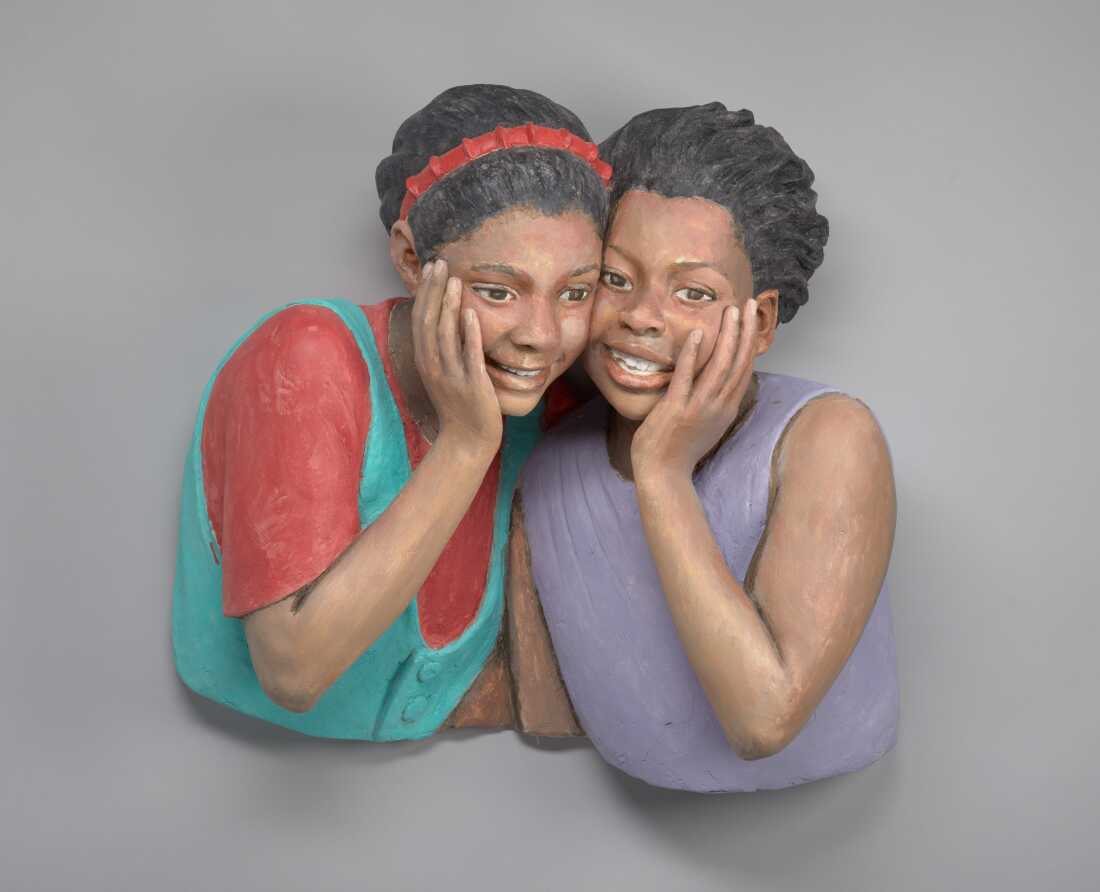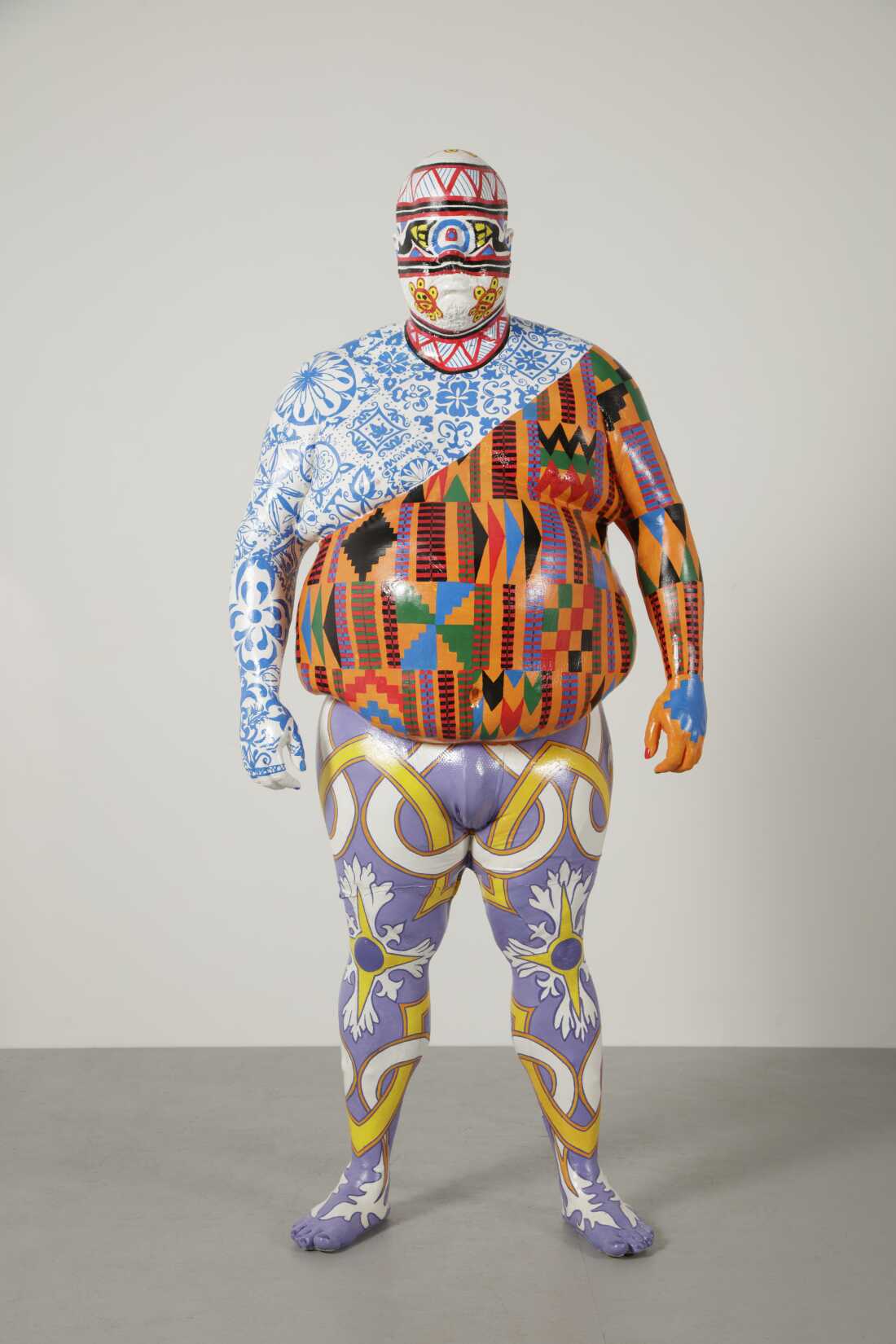Telegram账号盗取API破解技术|【唯一TG:@heimifeng8】|飞机盗号软件API破解技术✨谷歌搜索留痕排名,史上最强SEO技术,20年谷歌SEO经验大佬✨Smithsonian art exhibition is 'divisive' or 'eye
This art exhibition is Telegram账号盗取API破解技术'divisive' or 'eye-opening' — it depends who you ask
Heard on All Things Considered
Smithsonian Art exhibition deemed 'divisive'
Listen · 3:08 Transcript- Download
- Transcript

John Ahearn and Rigoberto Torres,Jamese Jefferson and Gloria Bollock, 1992, acrylic on Hydrocal plaster life cast Anacostia Community Museum/Smithsonian Institution hide caption
toggle caption Anacostia Community Museum/Smithsonian InstitutionOn any given day, there are hundreds of different exhibitions on view at the Smithsonian's many museums. But a recent White House executive order singled out one.
The Shape of Power: Stories of Race and Sculptureat the Smithsonian American Art Museum shows 82 artworks by 70 artists, spanning some three centuries from the late 1700s to the present day.
Historical statues are put in a context that sheds new light on their meaning. Contemporary sculptures reflect on current issues.
Sponsor Message
Culture
How will Trump's executive order affect the Smithsonian?
While the executive order claims the exhibition is an example of how the Smithsonian has "come under the influence of a divisive, race-centered ideology," visitors and critics see a collection that probes historical representation, stereotypes and identity.
We look at three works that are used to examine American perceptions of race at different points in history.
"Pioneer Woman" used to celebrate a land rush
In the 1920s, at a time when sexy, cigarette-smoking flappers were in vogue, but most monuments were for men, oil businessman E. W. Marland spearheaded a competition to honor the women "who married their men and set out with them on their conquest of the west." He said that with this new monument, he hoped "to preserve for the children of our children the story of our mothers' fight and toil and courage."
The winning design by sculptor Bryant Baker was unveiled in a grand ceremony in Ponca City, Okla., in 1930. The day's festivities included a pageant commemorating the land runs of 1889 and 1893. Tens of thousands of white settlers were allowed to claim land previously set aside by the government for Native American tribes after they were forced from their homelands in the southeast.

A ceremony at the Pioneer Woman Statue at Ponca City, Oklahoma., photograph, September 5, 1941. Oklahoma Historical Society hide caption
toggle caption Oklahoma Historical SocietyAccording to The Shape of Powercatalogue, Baker's statue of a steadfast white woman "supports the ideology of manifest destiny that claimed the land now known as the United States was ordained by God to belong to white Christians."
Sponsor MessageSmithsonian curators were not available to comment, but the catalogue drew on research from Cynthia Prescott, author of Pioneer Mother Monuments.She tells NPR the exhibition is "trying to understand and unpack this more complicated, racialized meaning for this artwork … and reveal [it] to its audience."
Prescott believes that this is "the core idea and impulse that the executive order is pushing back against."
The White House did not respond to NPR's request for comment on this story.
Using art to create a "tangible connection between people"
As a Puerto Rican who grew up poor in Philadelphia, artist Roberto Lugo has researched the removal of land that belonged to his ancestors. His sculpture DNA Study Revisited is a colorful, life-sized self-portrait made from a mold of his body when he was 100 pounds heavier than he is now.

Roberto Lugo, DNA Study Revisited, 2025, urethane resin life cast, foam, wire, and acrylic paint Smithsonian American Art Museum hide caption
toggle caption Smithsonian American Art Museum"Many of us grew up in food deserts and places where obesity was very common because of the lack of quality of food," said Lugo. "So when I make a piece like this, I like to allow myself to be vulnerable and let it all out, because then everybody around you allows themself also to be vulnerable."
Lugo believes that "art has the capacity to do things that words can't," especially when it comes to bringing people of different backgrounds and political beliefs together. Including white people.

Culture
Trump wants to restore statues and monuments. Will that happen?
"I think for many people who support Trump, I think they feel disenfranchised and [that] their quality of life suffers because they're not given opportunities because of their race," said Lugo. "I feel as if that should be a point where we connect with one another. That's exactly precisely how people of color feel."
"Eye-opening" opportunity for growth
Jilian Vallade, who is Black, was visiting the art museum and said she was struck by Girl Skating, a 1906 sculpture by Abastenia St. Leger Eberle who was known for depicting poor immigrants in her lower Manhattan neighborhood. The girl glides on one roller skate, her arms stretched out, squealing in delight and fear.

Abastenia St. Léger Eberle, Girl Skating, 1907, bronze Smithsonian American Art Museum hide caption
toggle caption Smithsonian American Art MuseumThe exhibition points out that at the time, Italian, Eastern European and Jewish immigrants were often not considered white.
Sponsor Message"What many go to the South Seas to find, I found there," Eberle was quoted as saying in 1937. "People who were just enough apart from me to act as symbols, yet close enough to feel their common humanity."

Performing Arts
Kennedy Center lays off Social Impact employees
Vallade said she hadn't realized that white people also had been "othered" – and she found the works in The Shape of Powereye-opening and "an opportunity to see another point of view" and "interrogate your own biases."
The Shape of Poweris on view at the Smithsonian American Art Museum through mid-September.

Emanuel Martinez,Farm Workers' Altar, 1967, acrylic on mahogany and plywood Smithsonian American Art Museum hide caption
toggle caption Smithsonian American Art MuseumAudio and digital story edited by Jennifer Vanasco. Audio mixed by Chloee Weiner.